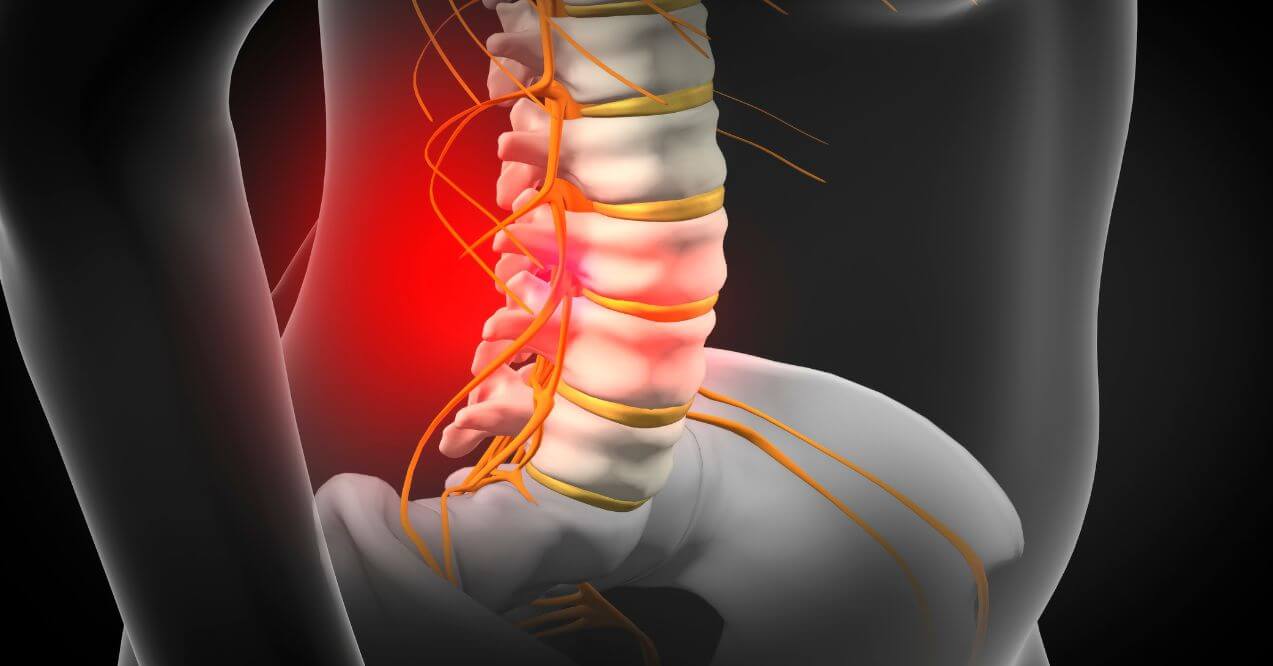What to Do Next If Facet Joint Injections Don’t Work?
Medically reviewed by our experts


Chronic back pain can make everyday activities feel difficult and affect your overall well-being. Facet joint injections are a common treatment for back pain, especially when inflammation or wear-and-tear occurs in the spine’s facet joints. While many people find relief with these injections, others may experience limited or temporary results.
If you’re wondering what next if facet joint injections don’t work, you’re not alone. This guide will explore other treatment options and next steps for those looking for additional solutions after facet joint injections haven’t provided the relief they hoped for.
What Are Facet Joints?

Facet joints are small stabilizing joints located between and behind adjacent vertebrae in your spine. These paired joints connect the vertebrae together, allowing for controlled movement while providing stability to your spinal column. Each vertebra has four facet joints – two connecting to the vertebra above and two connecting to the vertebra below.
These specialized joints serve several critical functions in your spine:
- Movement facilitation: Allowing bending, twisting, and extending of the spine
- Stability provision: Preventing excessive movement that could harm the spinal cord
- Weight distribution: Evenly distributing pressure across the spine during movement
- Protection: Shielding delicate spinal structures, including nerves
Each facet joint is covered with smooth cartilage that helps the bones glide easily against each other, with a capsule filled with synovial fluid to lubricate the surfaces. When healthy, facet joints enable pain-free movement.
However, they can cause discomfort if the cartilage wears down, the joint capsule becomes inflamed, or surrounding structures are strained—often due to aging, repetitive movements, or spinal trauma.
Why Get A Facet Joint Injection?
Facet joint injections, also called facet shots or facet block injections, are used to diagnose and treat persistent back pain. In some cases, this discomfort may coincide with knee and hip pain, particularly when spinal issues affect posture or movement patterns. These injections target the facet joints that may be causing discomfort due to inflammation, which can radiate to areas like the knees and hips, especially if spinal issues affect movement or posture.
The injection typically contains two main components: an anti-inflammatory agent to reduce swelling and a local anesthetic for immediate, short-term relief. The goal is to reduce inflammation and block pain signals to help ease discomfort. This combination works to:
- Decrease inflammation in the joint capsule
- Reduce pressure on nearby nerve tissues
- Provide temporary numbing for diagnostic purposes
- Improve function and mobility
From a diagnostic perspective, these injections help healthcare providers confirm whether specific facet joints are indeed the source of discomfort.
Are Facet Joint Injections Effective?

Facet joint injections show varying degrees of effectiveness depending on individual factors and the specific nature of the discomfort. Research suggests that approximately 50-60% of carefully selected patients experience meaningful relief following these procedures.
For those wondering how long does a facet injection last, the duration varies significantly from person to person. Some individuals report relief lasting several months, while others may experience benefits for only a few weeks. The effectiveness typically depends on:
- The underlying cause of joint irritation
- The degree of joint deterioration
- Individual response to the anti-inflammatory component
- Whether proper follow-up care is provided
It’s important to understand that these injections often work best as part of a comprehensive approach to spinal health rather than as standalone solutions. While some people experience dramatic improvement after a single injection, others may require a series of injections to achieve optimal results.
What Next If Facet Joint Injections Don’t Work? What you need to know
So, what next if facet joint injections don’t work? If you’ve undergone facet joint injections without experiencing the relief you hoped for, it’s important to take a thoughtful approach to your next steps.
First, recognize that an unsuccessful injection can actually provide valuable diagnostic information. It may indicate that your discomfort stems from structures other than the facet joints, which helps narrow down potential sources of pain.
Consider scheduling a follow-up consultation with your healthcare provider to:
- Discuss the results of your injection
- Re-evaluate your symptoms and any changes
- Review your full health history for additional insights
- Explore if timing or technique factors influenced your results
Treatment Options When Facet Joint Injections Don’t Work
When facet joint injections don’t provide adequate relief, several alternative approaches exist that may better address your specific situation. Many individuals find that a combination of treatments works best, especially for those wondering how to stop joint pain when it rains or during other environmental changes that seem to worsen discomfort. Let’s explore these options in detail.
Physical Therapy

Physical therapy represents one of the most effective non-invasive approaches when facet injections haven’t delivered desired results. A qualified physical therapist can design a personalized program that:
- Strengthens core and back muscles that support the spine
- Improves flexibility in areas that may stress facet joints
- Enhances posture and body mechanics during daily activities
- Teaches pain management techniques for at-home practice
Many people notice improvements within 4-6 weeks of consistent therapy. However, the greatest benefits come from incorporating the learned techniques into your daily routine long-term, creating lasting improvements in spinal health and function.
Chiropractic Care

Chiropractic approaches focus on spinal alignment and its relationship to overall function. This care modality operates on the principle that proper alignment reduces unnecessary stress on facet joints and surrounding tissues.
During chiropractic sessions, practitioners may use:
- Spinal adjustments to enhance joint mobility and alignment
- Soft tissue techniques to relieve muscle and fascia tension
- Traction methods to create space between vertebrae
- Guidance on posture and ergonomics for everyday activities
Many individuals experience immediate relief following adjustments, though lasting benefits typically require a series of sessions. Chiropractors often recommend a combination of in-office treatments and at-home exercises to maintain improvements between visits.
Lifestyle Changes

Sometimes the most impactful changes come through modifying daily habits that affect spinal health. Small adjustments in how you move, sit, and sleep can significantly reduce pressure on facet joints.
Effective lifestyle modifications include:
- Improving workplace ergonomics with correctly positioned desks, chairs, and screens
- Using proper body mechanics when lifting or doing repetitive tasks
- Enhancing sleep quality with supportive pillows and mattresses
- Practicing stress-reduction techniques like mindfulness and deep breathing
Additionally, many people don’t realize that emotional factors can influence physical discomfort. Some even wonder, can stress cause elevated liver enzymes and other physiological changes? Research indicates that chronic stress does indeed trigger inflammatory responses throughout the body, potentially worsening joint discomfort.
While making lifestyle adjustments, consider that nutritional support may also be beneficial for overall joint function. Motion Bliss offers a comprehensive approach to joint health by working to neutralize joint-eating acid and nourish cartilage from the inside out. Endorsed by Dr. Holly Lucille, ND, RN, this supplement features key ingredients like Calcium, which supports structural integrity, and Natural Eggshell Membrane (NEM), which contains essential components found naturally in joint tissue.

Many individuals find that combining physical modifications with targeted nutritional support provides a more holistic approach to joint health. When conventional treatments haven’t delivered desired results, addressing joint health from multiple angles – including proper nutrition – may help promote comfort and maintain mobility in daily activities.
Epidural Steroid Injections

When facet joint injections don’t provide the relief you need, you might wonder what next if facet joint injections don’t work. One effective next step is epidural steroid injections offer an alternative approach that targets a different area of the spine. While facet injections focus on the joints themselves, epidural injections deliver anti-inflammatory medication into the epidural space surrounding the spinal cord.
These injections can be particularly effective when:
- Nerve compression contributes to radiating discomfort
- Inflammation extends beyond just the facet joints
- Previous diagnostic tests suggest nerve involvement
The procedure involves placing a thin needle into the epidural space using imaging guidance to ensure accurate placement. The injected medication spreads to multiple levels of the spine, potentially addressing more widespread inflammation.
Radiofrequency Ablation

Radiofrequency ablation (RFA) represents a minimally invasive procedure that uses thermal energy to disrupt pain signals from specific nerves supplying the facet joints. This approach becomes a consideration when:
- Facet joint injections provided temporary but not lasting relief
- Diagnostic nerve blocks confirmed the pain source
- Other conservative treatments haven’t been effective enough
During the procedure, specialized needles deliver controlled heat to target nerves, creating a lesion that disrupts pain signals. Imaging guidance is used to ensure precise placement.
Most people experience significant improvement within 1-3 weeks, with relief lasting 6-12 months or longer. If pain returns, the procedure can be repeated.
RFA doesn’t permanently damage the nerves, as they usually regenerate over time. However, the temporary relief often helps individuals engage more effectively in rehabilitation and lifestyle changes.
Surgery

Surgical intervention becomes a consideration only after exhausting appropriate non-surgical options without achieving adequate relief. Modern surgical approaches for facet joint-related discomfort include:
- Less invasive methods to help stabilize the spine
- Procedures that reduce pressure on nerves
- Implants that allow the spine to move naturally while providing support
The decision to pursue surgery requires careful consideration of:
- The exact cause and type of your discomfort
- Your overall health and ability to recover
- Realistic expectations for possible results
- How your condition affects your daily life and well-being
Advances in surgical techniques have significantly reduced recovery times compared to traditional approaches. Many procedures now utilize small incisions, specialized instruments, and image guidance to minimize tissue disruption.
A detailed consultation with a specialist can help determine if surgical intervention matches your specific situation and goals. This discussion should include a thorough review of potential benefits, risks, and expected recovery timelines.
Conclusion
Living with persistent back discomfort can be challenging, especially when treatments like facet joint injections don’t deliver the relief you expected. So, what next if facet joint injections don’t work? Remember that this outcome provides valuable information that can guide your path forward. The key is working with healthcare professionals to identify alternative approaches that better address your specific situation.
From physical therapy and chiropractic care to lifestyle modifications and more advanced procedures like radiofrequency ablation, numerous options remain available. The most successful approach often combines several strategies tailored to your unique needs. Stay persistent in your pursuit of improved spinal health – many individuals find effective solutions after initial treatments prove insufficient.
A facet injection typically provides relief for 2-6 months, though results vary significantly between individuals. Some people experience benefits for only a few weeks, while others may find relief lasting up to a year. Factors affecting duration include the underlying cause, degree of joint deterioration, and individual response to treatment.
If facet injections don’t work, consult with your healthcare provider to reassess your condition. Consider alternative treatments like physical therapy, chiropractic care, or radiofrequency ablation. This outcome provides valuable diagnostic information, potentially indicating that your discomfort stems from structures other than facet joints.
Physical therapy helps by strengthening core and back muscles that support your spine, reducing pressure on facet joints. A therapist designs personalized exercises to improve flexibility, enhance posture, and correct movement patterns contributing to discomfort. These targeted approaches address underlying mechanical issues that injections alone cannot resolve.
FAQ
References

